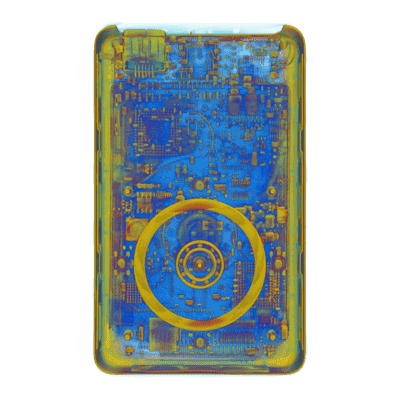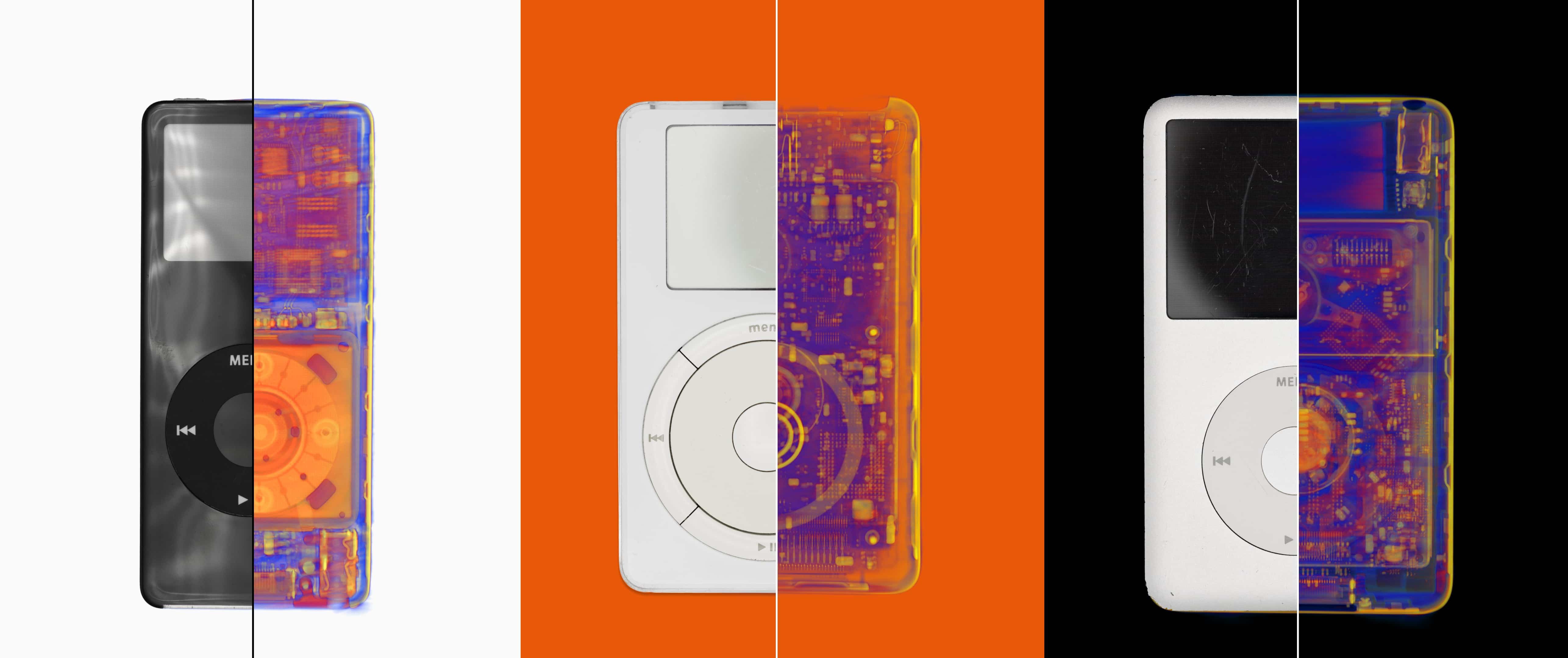CT scans of three different iPod models reveal some of Apple’s design considerations, like the click wheel bearings for smooth rotation.

- Tony Fadell, Apple’s former iPod chief, has shared X-ray vision images revealing some pretty interesting design considerations of several iPod models.
- Fadell is promoting his new book, titled “Build: An Unorthodox Guide to Making Things Worth Making” [Amazon link, Apple Books link]
iPod design: Bumpers for the click wheel

Images of the iPod’s internal design, taken using X-ray computed tomography utilized by a startup called Lumafield, make it easy to see what’s under the hood of an object such as the iPod without having to disassemble the entire device. The technology creates three-dimensional images so it can reveal curious design considerations. In the video, shared va Lumafield’s ScanOfTheMonth.com microsite, Fadell comments on X-ray images of the original iPod, the original iPod nano and the sixth-generation iPod classic. Read: How to share music or videos in FaceTime
Fadell also reveals a design consideration for the original iPod, which featured a wheel that you could turn to navigate the menus, which became one of the iPod’s defining features. But as it turned out, rotating the wheel wasn’t a great experience as the wheel would rock from side to side. The iPod’s designers fixed this by using bearings. Apple later perfected the navigation mechanism by creating a click wheel with a touch-sensitive surface that didn’t rotate as you turned it clockwise or counterclockwise. But to create a tactile sense of turning a wheel with their finger, one of the design considerations called for the removal of the bearings so that’s exactly what the team had done. Read: How to listen to music on your Apple Watch
Solving the song-skipping problem
To eliminate skipping when running, walking and performing other rigorous activities, Apple equipped the original iPod with a 32 MB memory cache. The device would then preload up to twenty minutes of music at a time from its tiny 1.8-inch Toshiba hard drive into the cache in order to prevent songs from skipping.
According to Fadell, Toshiba—the drive’s maker—thought that was a recipe for disaster. “When you have rotating media and you’re going to drop it, you don’t know what it’s going to do,” he says. “Toshiba was like, ‘You’re crazy—you’re never going to do a portable music player with this, the drive’s going to fail.’”
The team was extremely nervous about the reliability of the hard drive as consumers – unused to the delicacy of such devices in such a portable product—might treat the iPod rather more casually than they would a laptop. For this reason, design of the bumpers designed to protect the drive from the shock of being dropped casually onto a table was a key consideration.
And this from Fadell in terms of the iPod’s place in Apple’s history:
The Apple II brand doesn’t exist anymore, but it does—it’s a cornerstone of the company. The iPod is a cornerstone of the company. The iPhone would have never existed without the iPod. The iPod is never going away, no matter whether there’s a product named that or not.
Fadell has shared several anecdotes regarding iPod development as a promotional vehicle for his book. Recently, for example, he revealed that early “iPod Phone” prototypes featured a click wheel that turned into a number pad (“iPod Phone” was the internal name for a Frankenstein phone that Fadell’s team was tasked to create in order to explore the feasibility of an iPod with some phone functions).